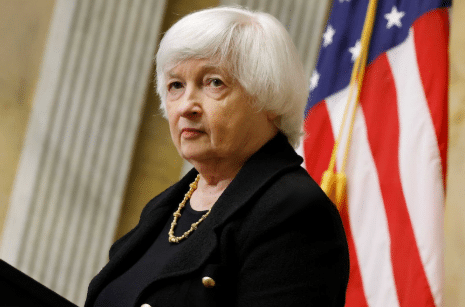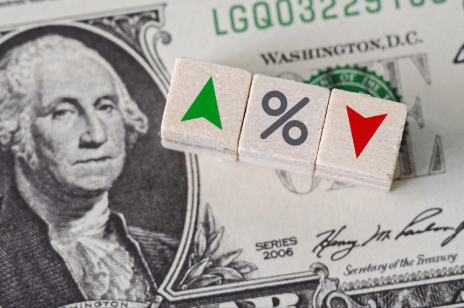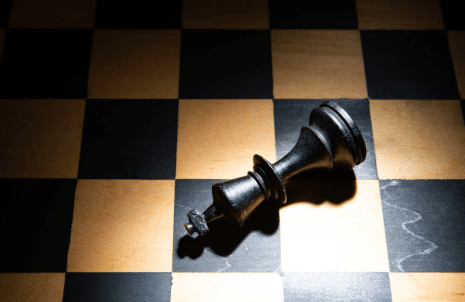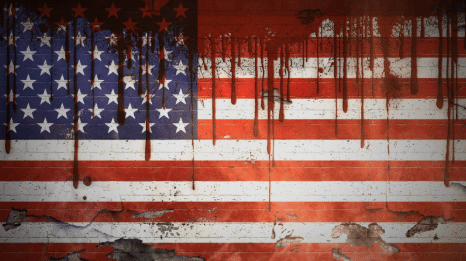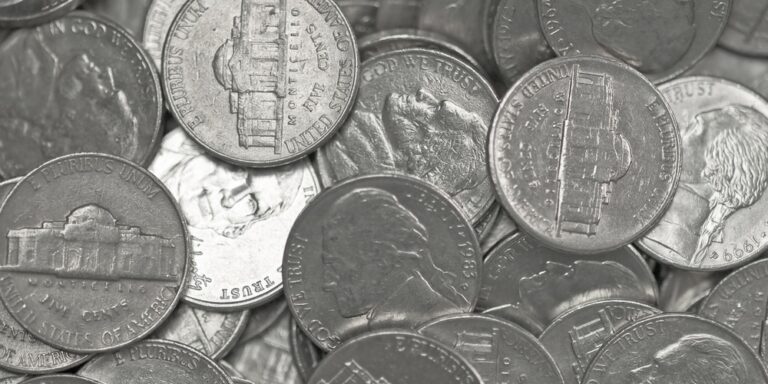
The 10 Most Valuable Nickels Are Worth Big Money
Just like a lot of other U.S. coins you might find in circulation, nickels can be some really valuable pieces. A "nickel" refers to a five-cent piece in the US coinage system.
Even though nickels may not be worth very much money when you look at their face value, they can really be valuable when they are sold for their silver content at coin shows and auctions in towns and cities.

A 1961 nickel with a picture of Thomas Jefferson (the third president of the United States) and Monticello, Jefferson's home.
Some History of the Nickel
In 1792, a coin valued at five cents was considered to be the first official coin of the United States, but nickels, as we know them today, were not found in common usage until close to the turn of the century. On May 16, 1866, Congress passed an act to create the new five-cent coin, which was composed of 75 percent copper and 25 percent nickel.
Over the next few years, the US Mint produced nickels and silver half dimes, before ceasing production of the half dimes. In general, four basic nickel designs survive from that time. These are the Shield, Liberty, Buffalo, and the Jefferson, with only slight variations in the full steps of all of the early coins.
The Jefferson nickel is the five-cent coin struck by the United States Mint since 1938 when it replaced the Buffalo nickel. From 1938 until 2004, the copper-nickel coin's obverse (or heads side) featured a profile depiction of founding father and third U.S. President Thomas Jefferson by artist Felix Schlag; the obverse design used in 2005 was also in profile.
It featured a depiction of Monticello and an obvious mintmark. Another interesting thing to note is the Lincoln nickel. Although Abraham Lincoln did not appear on any circulating coins until Victor David Brenner’s Lincoln cent in 1909, there were some Philadelphia Mint experiments that placed the president’s likeness on some 1866 coins.
These coins depict a profile bust of Lincoln that is similar to the one that can be seen on contemporary circulating tokens. In terms of later coins, the 2004-05 versions commemorated Lewis & Clark’s epic westward journey of discovery and the obverse of the coin (again, this is also known as heads) got a full makeover with the mintage in 2006.
World War II Nickels
It can be easy to tell a regular nickel from a silver wartime nickel. Silver nickels were produced from 1942 through 1945 and they have a large mintmark over the dome of Monticello on the reverse (or tails) side. The three mintmarks to look for on wartime nickels include “P” for Philadelphia, “D” for Denver, and “S” for San Francisco.
Keep in mind that the 1942 wartime nickel was the first coin on which a “P” mintmark was ever placed. However, not all of the 1942 nickels have large mintmarks over Monticello. In fact, most 1942 coins were made from nickel, until the nickel was needed to make artillery for troops in World War II. Also, silver nickels are not made entirely from silver. The composition of the wartime nickel alloy consists of 56% copper, 35% silver, and 9% manganese.
So, How Much Are The Coins Worth?
When you are looking at the coin values of any denomination, they will vary in terms of demand, and the price is also influenced by rarity and the condition of the coin. There are two main organizations that can be used to assess and certify coins in the United States.
These are the Numismatic Guaranty Corporation (NGC) and the Professional Coin Grading Service (PCGS), and they are used extensively in the field of coin collecting. Another important organization for certification is the American Numismatic Association, which was formed to advance the knowledge of numismatics along educational, historical, and scientific lines, and also to enhance interest in the hobby of coin collecting.
Both of these professional organizations rely on the Sheldon Scale to assign a numerical rating. These ratings can range from 1 to 70. Coins rated 60 or higher are generally referred to as coins in a “mint state” and they are considered the most valuable ones.
Gem coins are rated 66 or higher, and they have exemplary strike and luster with no noticeable abrasions. In this article, we’ll take a look at some of the most valuable nickels that you can find in current circulation, and we’ll also look at a few of the other collectors’ coins that might also be worth a little more than their face value. In general, these are the types of nickels you should be looking for:
- Liberty Head nickels: these coins are sometimes worth $2 and up
- Buffalo nickels: prices for these vary, but dateless Buffalo nickels are often worth 20 cents or more each, and those with dates can be worth $1 and up
- Jefferson nickels made before 1960: old Jefferson nickels that come from the 1930s, 1940s, and 1950s have a value of 10 cents or sometimes much more.
But those are just the coins with a slightly higher value. Some collectors’ coins are going to be worth a whole lot more to people. Some of the most valuable coins that you can find at coin shows and auctions are ranked here from the most valuable ones ($3.7 million) to the least valuable ones ($50).
- Valuable Nickel #1: 1913 Liberty nickel ($3.7 million). There were only five Liberty Head nickels produced in 1913, and they are all extremely valuable now. The 1913 Liberty nickel became the first United States coin to hit the $100,000 mark when it was sold in 1972, and it became the first $1 million coin in 1996.
- Valuable Nickel #2: 1916/16 Buffalo nickel ($3,950). These are the second-most valuable nickels in a grade of Good-4 and they are widely considered the most popular error nickels. Like the 1916/16 nickel, the 1918-7-D nickel is also a popular error coin. The $1,000 price tag is for a coin in a grade of Good-4. The 1936–D 3½-legged Buffalo nickel ($750) is also a popular error coin, which was created when the die that strikes the reverse design was over-polished and that is what accidentally removed half of the buffalo’s front leg.
- Valuable Nickel #3: 1877 proof Shield nickel ($2,100). Only proof nickels were made in 1877, but many of them entered circulation, which is why some of these proof nickels show signs of wear. A Very Fine 1877 nickel is worth over $2,000. 1878 Shield nickels were only made as proof coins, but many escaped into circulation and are now worn. These can easily be worth more than $1,000. Less than 20,000 Shield nickels were made in 1880 and they are very difficult to find. Even with a grade of Good-4, an 1880 Shield nickel is worth $500.
- Valuable Nickel #4: 1997-P matte proof finish uncirculated Jefferson nickel ($325): This is the only Jefferson nickel that you’ll find on this list. It can be a very valuable nickel in good condition, and it can usually only be found available and listed correctly in special commemorative coin sets.
- Valuable Nickel #5: 1886 Liberty nickel ($285). Another key date for nickels, in general, is 1886. In the Liberty Head series, the 1886 coin is another one that can be worth hundreds of dollars even with a grade of Good-4.
- Valuable Nickel #6: 1912-S Liberty nickel ($165). The 1912-S is a very rare date that every collector needs to complete the Liberty Head series (also known as the V nickel series). These coins are not easy to find at all, which is why they can often be worth money.
- Valuable Nickel #7: 1913-D Type II Buffalo nickel ($125). These Denver Type II Buffalo nickels from 1913 can also present a major challenge to be found for any collector who is trying to put together a complete set of the series.
- Valuable Nickel #8: 1871 Shield nickel ($72). As a regular-issue Shield nickel worth less than $100 in Good-4, the 1871 nickel is a good example of a business-strike coin from the 1870s that just was not very common.
- Valuable Nickel #9: 1921-S Buffalo nickel ($64). These nickels are also rare and they can be an excellent find for anyone looking through old rolls of Buffalo nickels or coin sets at antique stores or shows.
- Valuable Nickel #10: 1917-S 2 feathers Buffalo nickel ($50). These coins have only two feathers on the headdress rather than three. The third feather is usually tucked between the back of the Indian head and the prominent vertical feather on other coins. The 1915-S Buffalo nickel is also a rare, regular-issue Buffalo nickel that can be worth a good price with a grade of Good-4.
Old Jefferson Nickels Worth More Than 10 Cents Each
So you can see that a lot of nickels can be worth money to coin dealers and other collectors. Old coins are often the most valuable, but not always. All the Jefferson nickel values listed below in the price guide are for coins in average circulated condition. Always keep in mind that higher-grade pieces will be worth more and cleaned and damaged nickels will often be worth less.
- 1938 – 50 cents
- 1938-D – $1
- 1938-S – $1.50
- 1939-S – 50 cents
- 1942-D over horizontal D – $1
- 1942-P – $2
- 1942-S – $2
- 1943-P – $2
- 1943/2-P – $35
- 1943-D – $2
- 1943-S – $2
- 1944-P – $2
- 1944-D – $2
- 1944-S – $2
- 1945-P – $2
- 1945-D – $2
- 1945-S – $2
- 1949-D/S – $60
- 1949-S – 30 cents
- 1950 – 50 cents
- 1950-D – $10
- 1951 – 25 cents
- 1951-D – 25 cents
- 1951-S – 50 cents
- 1952-D – 20 cents
- 1955 – 25 cents
- 1955 D/S – $20
- 1958 – 20 cents

Damaged rare coins can be worth much more than their metal value.
Nickels With Errors
Most things that people think are error coins are damaged coins and they won’t be worth much money. In fact, there is a wide range of mint mistakes (such as die caps) that can actually be worth a premium price and you’ll find that rare nickels like these can sometimes turn out to be very valuable.
For example, die caps can happen when a coin sticks to the hammer die and if it remains on the die long enough it will spread around the outside of the die, forming what looks like a bottle cap. There are different stages of die caps and these coins can almost be called the “King” of mint errors because they are highly sought after by coin collectors and they can trade for a higher premium on average than most other mint errors.
For example, a well-formed and deep “bottle cap” can sometimes sell for as much as $30,000, although most are between the $2,000 and $3,000 range. Another example is the struck-through coin. A coin is considered struck-through if an object or substance happens to get in between the planchet and the die and the planchet is then struck by the die.
This produces a noticeable effect on the face of the coin. Some coins have been struck through nails, wood, paper clips, staples, other coins, grease, planchets, and other unidentified objects. Often coins struck through a grease-filled die will be missing some important design features.
The condition of the coins can depend on a wide range of factors such as the coin type, denomination, and what the coin is struck through. Struck through coins can be worth well over $2,000 if the entire face of the coin holds that value and the strike does not just result in partly missing features like a digit or letter.
In general, the coin values will range from only a few dollars when there is a mild die clash to several hundred dollars when there are more impressive die caps. But always be sure to keep your coins that might look damaged, because you never know when they might be really valuable to coin collectors.
A Few Other Ways to Find Valuable Nickels
Generally, the most valuable nickels are the ones that are still in mint condition. This does not mean that the nickel has to look exactly like it did when it was first minted. There are all kinds of normal and reasonable changes in coloration that can be expected when you are working with old coins.
In fact, when a coin is cleaned, it may even make it less valuable. The nickels that can be sold for the highest values have to be in the best condition possible. These nickels are also very rare, due to various reasons. Some of these reasons might include production errors, a small quantity of the specific coin in production, or a large number of the coins already having been melted down for their silver content.
All of this means that it can be a little difficult to find valuable and rare nickel coins. It can be a painstaking process to go through all of the coins carefully and try to find some of the defining characteristics that we’ve described on this page.
It can take a long time and in that way, it is not much different from the original process of gold prospecting. But when you finally strike it lucky, you could be made for life. Many people limit their search for valuable and rare nickels to only the coins passing through their hands as pocket change, but there are much more efficient ways for numismatists to look for these collectible coins.
You can check boxes, bankrolls, or bags that you can get for face value from banks. It can be a highly efficient strategy to look through many old nickels in coin collections at once like that. Just like so many other ways of getting rich, finding a bunch of valuable coins among your change collection may not be quick or effective.
But if you try to remember some of the distinguishing characteristics of these valuable nickels, you might get lucky. Maybe next time you have a pocket full of coins, you might find one that is worth a pretty penny at the coin show or auction.
The financial market is crumbling and EVERYONE will be affected. Only those who know what's going on and PREPARE will survive... dare we say thrive. Our 7 Simple Action Items to Protect Your Bank Account will give you the tools you need to make informed decisions to protect yourself and the ones you love.




